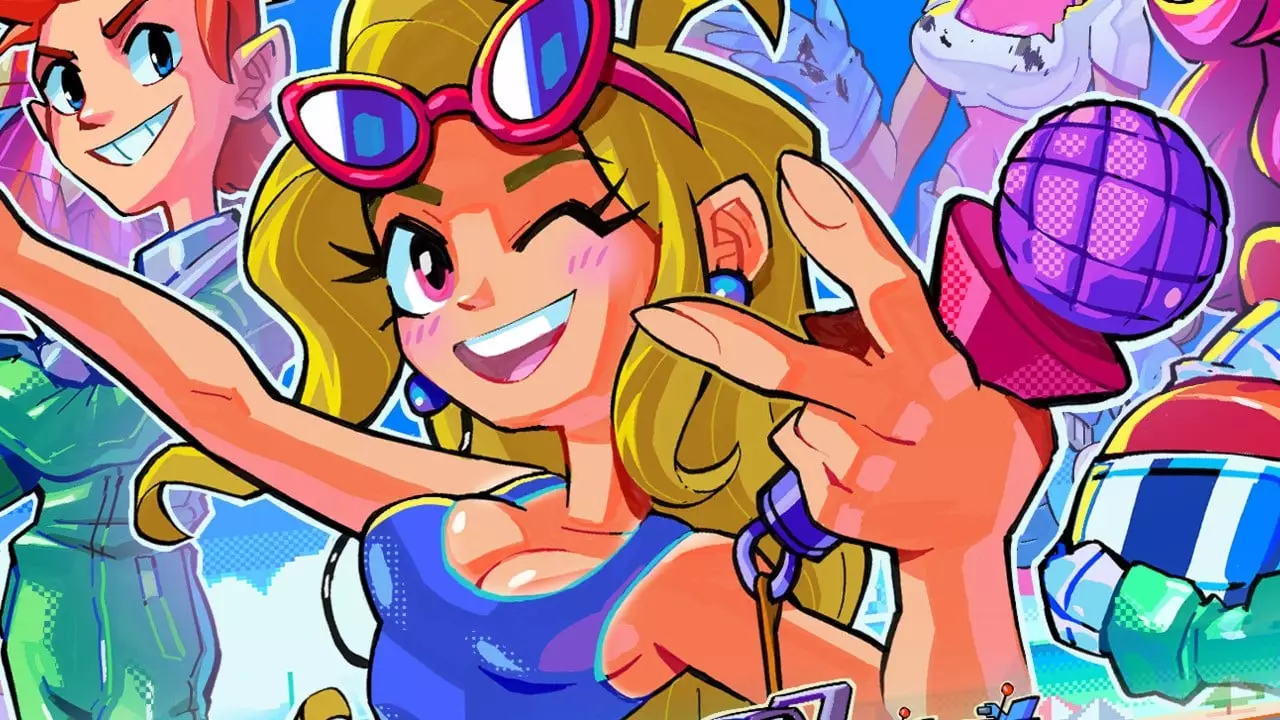The realm of indie gaming has seen a remarkable evolution over the past few years, especially as retro-inspired titles emerge to capture the charm of earlier eras. One such title, Victory Heat Rally, landed on Kickstarter in 2020, promising players a nostalgic journey through arcade racing reminiscent of Sega’s acclaimed Super Scaler series from the 1980s. However, as the final product makes its way to the Nintendo Switch, the journey appears less triumphant than anticipated.
When players first laid eyes on the Kickstarter trailer, they were greeted with visuals that echoed the joy of Sega’s Power Drift. The segmented rollercoaster-like tracks promised thrilling gameplay that would allow players to experience the joy of 80s arcade racing. Fast forward to the release in 2024, and the visual landscape is less reminiscent of nostalgic arcade cabinets, leaning instead on modern 3D graphics strategies. The cel-shaded environments attempt to evoke a simpler aesthetic, but the overall effect strays far from the arcade magic many hoped for.
Despite this, Victory Heat Rally remains visually appealing, presenting a charming retro vibe with its cartoonish vehicle sprites gliding down pseudo-3D roads. This sensation, however, feels overshadowed by the fact that what appears as nostalgia is, in essence, a carefully-crafted illusion. The core design reveals itself as a standard polygonal racing format rather than the innovative tribute originally advertised.
At its heart, Victory Heat Rally offers players a singular gameplay mechanic: the drift maneuver. Mastery of this technique is rewarded with speed boosts, a straightforward premise that quickly becomes its own Achilles’ heel. While the ease of learning how to drift is undoubtedly a plus for accessibility, the lack of varied mechanics leads to a sense of monotony. Even the Championship mode, which ambitiously seeks to diversify gameplay through lap-based races and side missions, ultimately fails to mask the repetitiveness that can dim the excitement of racing.
The game’s 5-6 hour Championship mode provides moments of enjoyment but often feels like an echo of itself as players race against familiar obstacles. The challenge soon dissipates once the drift mechanic is internalized, leaving gamers yearning for greater complexity and engagement.
In an age where multiplayer experiences have the potential to elevate a game’s replay value, Victory Heat Rally offers a split-screen mode for up to four players. Although the design allows for entertaining casual sessions with friends, the limitations of its simplistic gameplay mean that these experiences might not hold players’ attention for long. Once the novelty of racing against others fades, the game struggles to present compelling reasons for continued play, especially given the competitive landscape occupied by several other racing titles on the Switch.
Moreover, while Victory Heat Rally successfully positions itself among indie racers with charming visuals, it lacks the unique identity that gamers often seek. Without the allure of its originally envisioned Super Scaler nostalgia, the game becomes just another face in a crowded arena competing for fleeting player interest.
Ultimately, Victory Heat Rally finds itself in a curious position in the racing genre—a commendable attempt at capturing the heart of retro arcade gaming that falls short of its lofty aspirations. It is not a bad game; players will find fleeting joy in its simplistic yet vibrant world and the social aspect of multiplayer racing. Yet, compared to its competitors, it remains something of a paradox; a captivating façade hiding a routine experience. As players finish their time with it, the question remains: what lies ahead that can genuinely unite nostalgia with innovation in the dynamic landscape of racing games? Only time will tell, but for now, Victory Heat Rally is merely a hint of what it could have been.


Leave a Reply